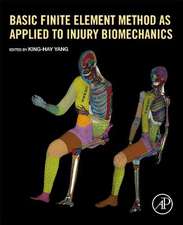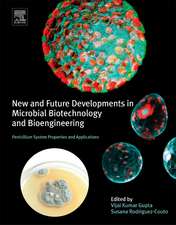Advanced Rehabilitative Technology: Neural Interfaces and Devices
Autor Qingsong Ai, Quan Liu, Wei Meng, Sheng Quan Xieen Limba Engleză Paperback – 20 aug 2018
Each chapter goes through a detailed description of the bio-mechatronic systems used and then presents implementation and testing tactics. In addition, it details new neural interfaces and devices, some of which have never been published before in any journals or conferences. With this book, readers will quickly get up-to-speed on the most recent and future advancements in bio-mechatronics engineering for applications in rehabilitation.
- Presents insights into emerging technologies and developments that are currently used or on the horizon in biological systems and mechatronics for rehabilitative purposes
- Gives a comprehensive background of biological interfaces and details of new advances in the field
- Addresses the challenges of rehabilitative applications in areas of bio-signal processing, bio-modelling, neural and muscular interface, and neural devices.
- Provides substantial background materials and relevant case studies for each subject
Preț: 938.40 lei
Preț vechi: 1262.58 lei
-26% Nou
Puncte Express: 1408
Preț estimativ în valută:
179.58€ • 186.42$ • 149.74£
179.58€ • 186.42$ • 149.74£
Carte tipărită la comandă
Livrare economică 17-31 martie
Preluare comenzi: 021 569.72.76
Specificații
ISBN-13: 9780128145975
ISBN-10: 0128145978
Pagini: 276
Dimensiuni: 191 x 235 x 19 mm
Greutate: 0.48 kg
Editura: ELSEVIER SCIENCE
ISBN-10: 0128145978
Pagini: 276
Dimensiuni: 191 x 235 x 19 mm
Greutate: 0.48 kg
Editura: ELSEVIER SCIENCE
Public țintă
Researchers, academics and graduate students, who are studying in the field of neural interfaces and rehabilitation. Bioengineers, Rehabilitation Engineers, Clinicians. Academics that are teaching courses in neural and rehab technologiesCuprins
1. Introduction
2. State of the Art
3. Neuromuscular Signal Acquisition and Pre-Processing
4. EMG-Based Motion Recognition
5. Brain Signal Acquisition and Pre-Processing
6. EEG-Based Brain Intention Recognition
7. Neuromuscular Modelling
8. Neural Interfaces
9. Neural Devices
10. Conclusion
2. State of the Art
3. Neuromuscular Signal Acquisition and Pre-Processing
4. EMG-Based Motion Recognition
5. Brain Signal Acquisition and Pre-Processing
6. EEG-Based Brain Intention Recognition
7. Neuromuscular Modelling
8. Neural Interfaces
9. Neural Devices
10. Conclusion

















